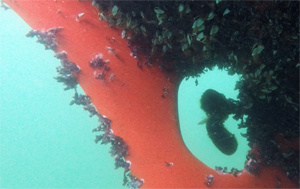Solo nonstop circumnavigation is among the most challenging feats in sailing. Even by that standard, the 2018 Golden Globe Race has been particularly hard on its skippers.
Seventeen yachts departed Les Sables d’Olonne, France, on July 1 for the start of the race, but by late November nine sailors had retired due to dismasting, capsizing and broken instruments. Several captains have been hurt along the way, at least one seriously. Three sailors have been rescued.
As of Nov. 20, Frenchman Jean-Luc Van Den Heede’s Rustler 36 Matmut was about 350 nm from Cape Horn despite mast damage from a serious knockdown in the South Pacific west of Chile. He led Dutch sailor Mark Slats by more than 1,400 nm, and third-place sailor Uku Randmaa of Estonia by more than 3,000 nm.
Briton Susie Goodall is in fourth place and American Istvan Kopar was in fifth place aboard the Tradewind 35 Puffin. Both are more than 3,000 nm behind Van Den Heede.
The Golden Globe Race is a unique challenge for solo sailors. Competitors are limited to the equipment available during the initial race 50 years ago. That means no GPS, modern navigation electronics or satellite telephones. Even the vessels are regulated, and must have been designed before 1988 and be no longer than 36 feet.
According to race organizers, this inaugural event commemorates the first solo nonstop circumnavigation completed by Sir Robin Knox-Johnston during the 1968-69 Golden Globe Yacht Race. The 2018 contest, passing the five Great Capes, covers some 30,000 nm.
 |
|
Some of the race boats experienced heavy fouling and needed to stop for hull scraping. |
|
Courtesy GoldenGlobeRace/PPL |
Most of the original 17 skippers won’t finish the grueling race. Three retired in July 2018 shortly after departing Les Sables d’Olonne, and French sailors Antoine Cousot and Philippe Péché retired a day apart in late August after their wind vanes broke.
Norwegian skipper Are Wiig retired Aug. 27 after capsizing and dismasting while repairing the wind vane, according to race organizers. Almost a month later, on Sept. 24, Irish sailor Gregor McGuckin and Indian sailor Abhilash Tomy both retired after dismasting near Amsterdam Island in the South Indian Ocean during a powerful storm. Both were rescued by a French Fisheries Patrol Vessel. Tomy is expected to recover from serious injuries suffered in the incident.
The Japanese bulker Shiosai rescued French sailor Loïc Lepage on Oct. 22 some 670 miles southwest of Perth, Australia, after his vessel Laaland dismasted in the South Indian Ocean.
Van Den Heede’s knockdown occurred at about 1500 UTC on Nov. 5, and the impact damaged the connecting bolt attachment to the mast that holds all four lower shrouds, according to race officials. The 73-year-old ultimately decided against stopping in Chile for repairs, but judges applied an 18-hour time penalty after Van Den Heede made a satellite phone call to his team following the knockdown. The satphone is reserved only for emergencies. Race Chairman Don McIntye said the penalty reflected the fact that Van Den Heede did not receive material help during the call. Stopping for assistance with repairs, or getting help via telephone, would lead to disqualification.
Other racers have also reported extensive barnacle growth on their hulls. Russian sailor Igor Zaretskiy, currently in eighth place, announced he’ll stop in Fremantle, West Australia, to repair his mast and clean the hull of his Endurance 35 Esmeralda, according to race spokesman Barry Pickthall, relegating him to the Chichester Class for those who are forced to make one stop.
For more on the race, or to follow the skippers’ progress live, visit https://goldengloberace.com/livetracker/.

